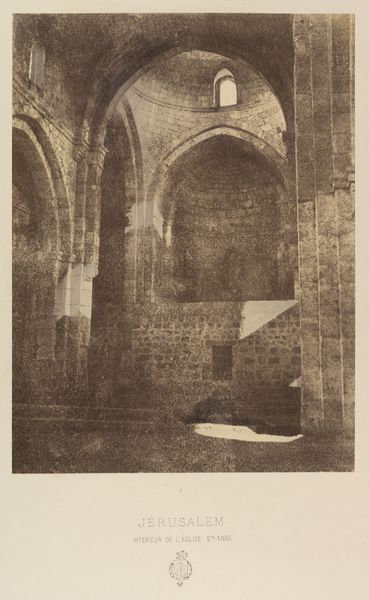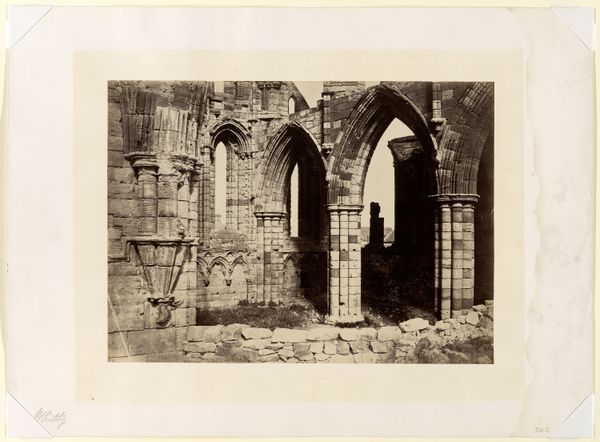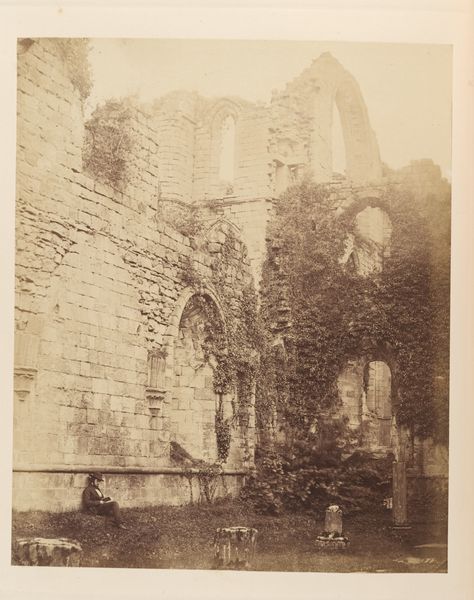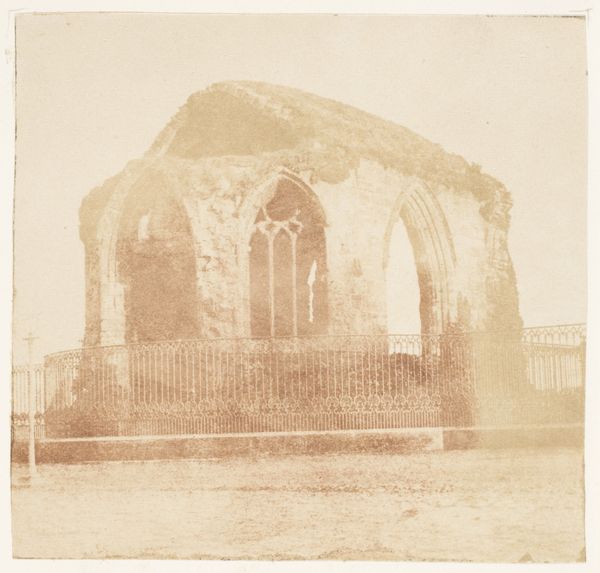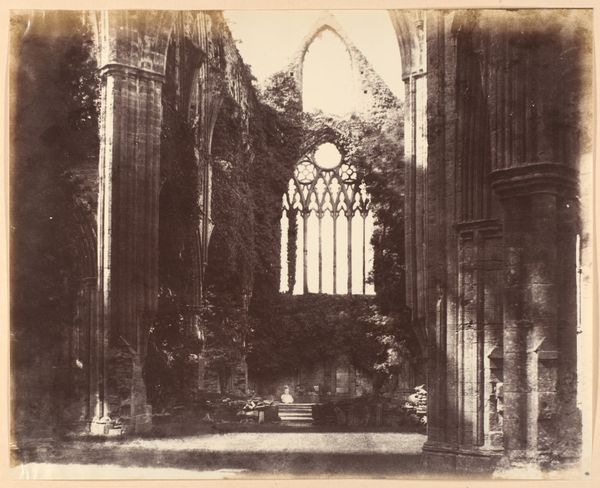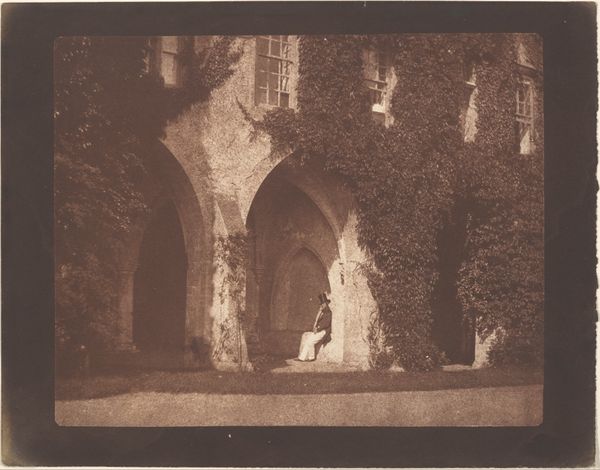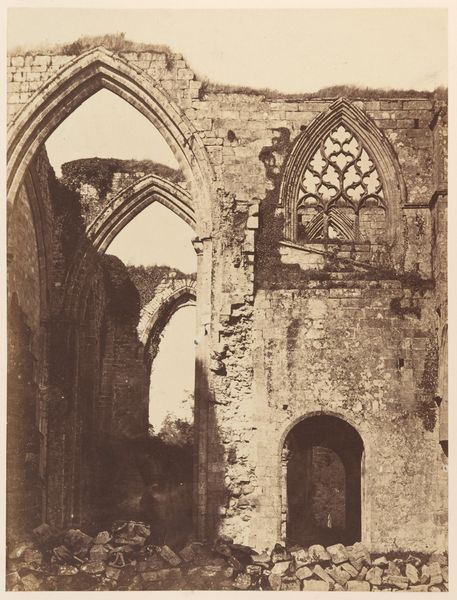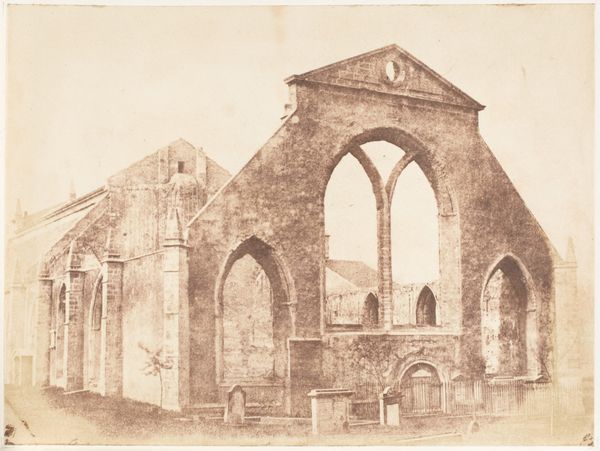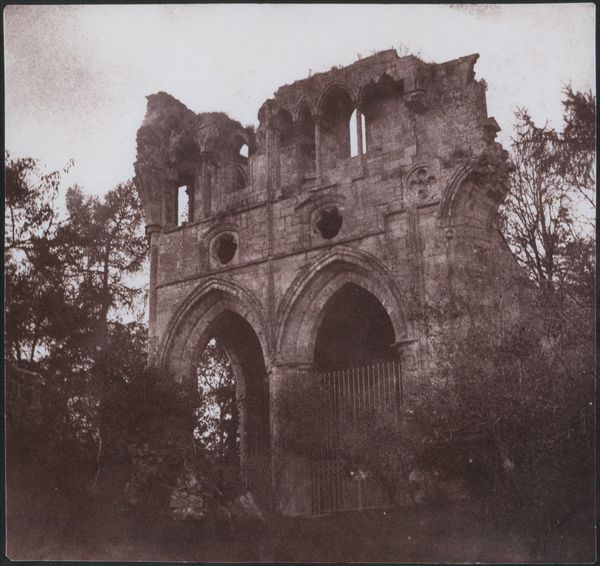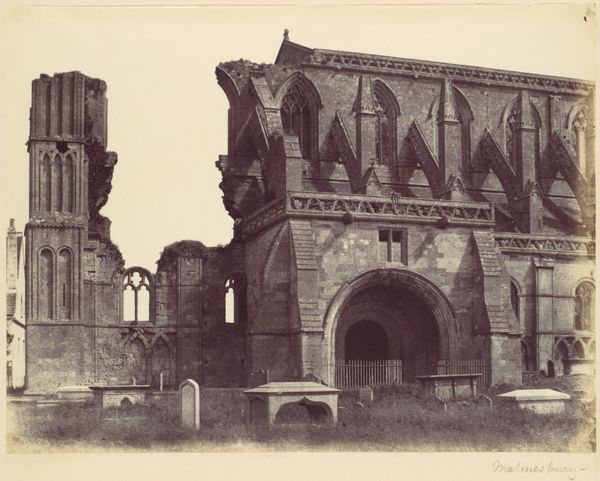
photography, gelatin-silver-print, architecture
#
landscape
#
photography
#
romanticism
#
gelatin-silver-print
#
architecture
Copyright: Public Domain
Editor: This is “St. Andrews,” a gelatin silver print from between 1843 and 1847 by Hill and Adamson. It's…haunting. There's such a weight to the ruin in the frame, a real sense of something lost. What strikes you about this work? Curator: The image pulses with echoes, doesn’t it? The ruined architecture speaks of cultural memory, of a sacred space worn by time, transformed into a signifier of loss and perseverance. Do you see how the play of light and shadow imbues the stones with almost a living quality? Editor: I do! It’s almost like the building itself is breathing, even crumbling. I suppose it evokes that feeling of romanticizing ruins, something imposing and aged, far removed from everyday life. Is that what it’s about? Curator: Romanticism is part of it, certainly. But think deeper about symbols. Consider the arch, repeated throughout the ruin. It suggests a gateway, a passage. But a passage to what? Is it a bridge to the past? To a spiritual realm? How does the incomplete archway affect our understanding of potential or of failed intention? Editor: Hmm. A failed intention… perhaps a bridge that can no longer be crossed. The arches *are* open, yet leading to nothing. I guess it encourages one to think about the things that time erases. Curator: Exactly! And think about the enduring strength in that ruin! Its survival is a kind of victory, embodying history, memory, the passage of faith and resilience of human structure and values. So, the photo is less about pure sadness and more about endurance against time, a layered tension. Does that give you a different feeling about the image now? Editor: It does. The image is definitely heavier. It's about time passing, definitely. Thanks so much. Curator: My pleasure. It has given me insight as well!
Comments
No comments
Be the first to comment and join the conversation on the ultimate creative platform.

